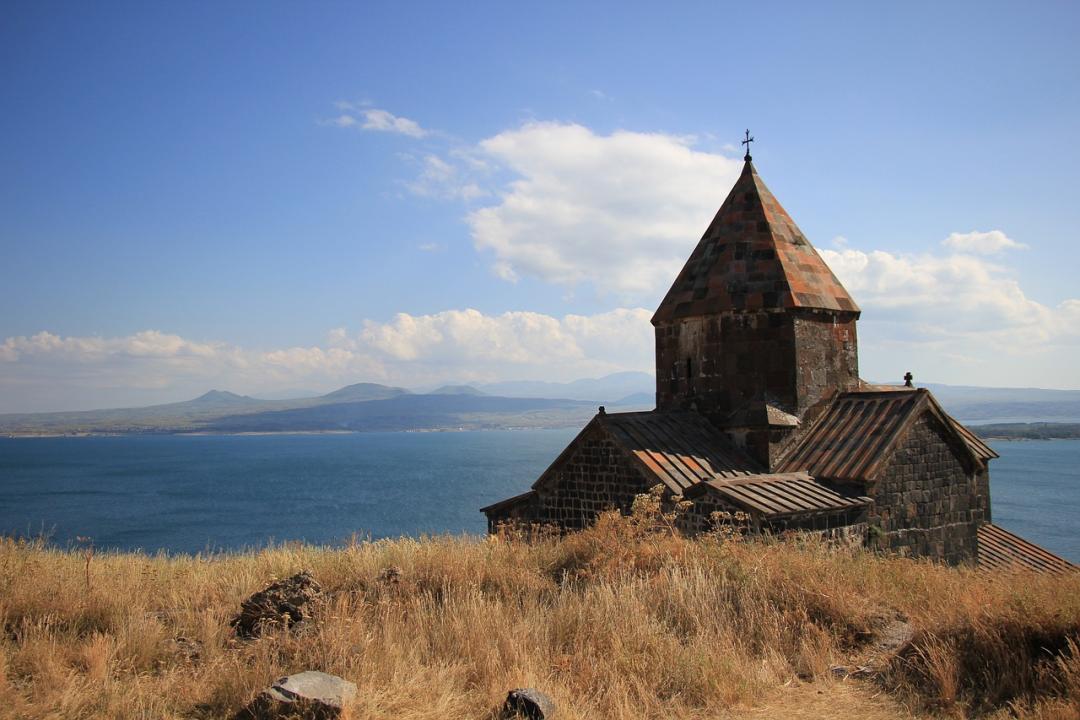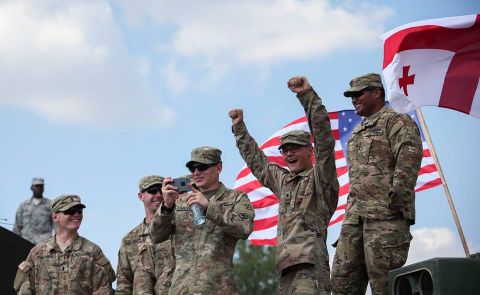
Armenia: Navigating Regionalism

The 2020 Nagorno-Karabakh vicious war brought significant changes to the South Caucasus region. Long-standing barriers between certain countries began to come down, creating new opportunities for enhanced trade and economic relations. However, the issue of demarcating and delimiting the altered borders led to ongoing tension and periodic military escalations between Armenia and Azerbaijan in the post-war period. The war also significantly altered the South Caucasus’s security landscape, which has become no safer and remains a minefield. Major regional powers’ interests in expanding their influence over smaller countries also intensified.
The question of where it will lead or what form it will take is particularly salient with regard to Armenia, which is in the midst of a ‘trendy’ civilizational turn and has to make a definitive choice on the direction to take.
The abandonment of Karabakh, long perceived by some international actors as a shackle binding Armenia to Russia’s influence, has now positioned Armenia’s prospects for EU integration to gain prominence. This shift coincides with Armenia’s sharp criticism of the Collective Security Treaty Organization (CSTO) - the region’s primary security arrangement - for its failed support during Azerbaijani incursions into Armenian territory in 2021 and 2022. Armenia officially requested assistance from other CSTO member states following the military escalation along the Armenian-Azerbaijani border in September 2022, which resulted in territorial losses for Armenia. Since then, Armenia has repeatedly accused these member states of ignoring its request. It further declined CSTO’s offers to provide “military-technical assistance” and deploy a monitoring mission to the border.
The disappointment with the CSTO for failing to come to its aid culminated in Armenian Prime Minister Nikol Pashinyan’s announcement that Armenia would begin withdrawing from the bloc. Pashinyan accused CSTO members of not fulfilling their obligations and even conspiring with Azerbaijan against Armenia. These allegations were supported by evidence revealing that Belarus, a CSTO member, had been actively aiding Azerbaijan’s military efforts from 2018 to 2022. As seen by Politico, documentation, including correspondence, diplomatic communications, and sales records, showed that Belarus provided services to modernize Azerbaijan’s artillery and supplied new electronic warfare and drone technology.
The situation escalated when the Armenian leader publicly voiced these accusations. In response, Belarus summoned the Armenian ambassador to its Foreign Ministry. Armenia retaliated by recalling its envoy to Yerevan. The diplomatic rift deepened further when Belarus’s ambassador returned to Minsk, effectively severing diplomatic relations between the two countries.
So, as Moscow’s role as a security guarantor in the South Caucasus appears to wane, the EU has been strengthening its regional presence since 2022. This evolving dynamic presents both opportunities and challenges, potentially leaving Armenia in a position where its best option might be a “non-choice” or a lack of choice.
The 3+3 Format: An Asymmetrical Partnership
To reach the discussion’s core, modern realities and the post-war period in Armenia opened up a stage for certain integration approaches. Once again, Armenia finds itself caught between competing regionalist projects like the 3+3 format (also known as the platform of six) and EU-centered regionalism, representing Armenia’s aspiration for Westernization - a promising yet challenging goal.
The very name of the “3+3” format already indicates the inherent imbalance: on the one hand, there are three regional powers - Russia, Türkiye, and Iran - and on the other, smaller states - Georgia, Armenia, and Azerbaijan. This collaboration format is inherently asymmetrical since it mainly serves the interests of the dominant regional actors and redistributes spheres of influence among them. These three major states view the South Caucasus as within their exclusive sphere of influence and share a common interest in expelling Western presence from the region.
While the concept of the 3+3 regional platform had long been part of behind-the-scenes discussions, it gained prominence following the 2020 Nagorno-Karabakh war. Turkish President Recep Tayyip Erdoğan reinvigorated the idea, promoting the establishment of a “platform of six” to enhance regional cooperation in security, economy, and transportation. Interestingly, a memoir from an Iranian official suggests that the platform was initially an Iranian proposal, adding another layer to its complex origins.
The 3+3 format initially faced challenges in achieving full participation from all intended members. Georgia, in particular, often opposed the “platform of six” due to its ongoing territorial disputes with Russia. Some expert circles in Georgia have even referred to the framework as “A False Choice,” highlighting the deep-seated concerns about its implications. This opposition effectively reduced the platform to a “3+2” arrangement at times. However, the situation in Georgia remains fluid. The country’s internal political dynamics, especially in light of upcoming elections, make its stance on the platform indefinite and subject to change.
Armenia’s position on the 3+3 format is characterized by cautious interest. The Armenian government, while uncertain about the potential benefits, is reluctant to miss an opportunity that could potentially end its long-standing regional isolation. Yerevan’s interest in the “3+3” format seems to be contingent on the agenda excluding issues already addressed in other formats, such as the peace talks with Azerbaijan and the discussions on reopening transport links.
Critics within Armenia’s pro-Western parties vehemently reject this notion of regionalism proposed by the platform of six, characterizing it as detrimental to the country’s progress and a step away from closer ties with the West. Several analysts go further, suggesting that embracing such a concept could potentially threaten Armenia’s very sovereignty.
Another significant challenge lies in the existing issues between the platform’s members. The three South Caucasus states seem no closer to forming a unified political region than they were in the early 1990s, with positive interdependence and cooperation among all three remaining the exception rather than the norm. Despite their geographical proximity, the level of interaction and interdependence between these states remains limited and typically bilateral. There is little sense of a shared regional identity or “regionness” among the three states, each of which seeks closer alliances with other regional actors, notably Russia, Türkiye, Iran, or Western powers such as the US and EU. This divergence in strategic alignments further complicates the prospects for regional cooperation within the proposed 3+3 format.
Armenia’s Europeanization Rhetoric and EU Enlargement Priorities
Nevertheless, the situation on the other front is not smooth either. Before 2010, all indicators pointed to Armenia being unresponsive to the EU’s stimuli for reform․ Yet, since the 2010s, Armenia has eagerly embraced EU policy and institutional frameworks. Armenia’s approximation with the EU is shaped by an interaction between EU, domestic, and regional factors, which explains both the pace or extent of receptivity to EU templates since the 2010s and the current commitment to greater Westernization. Since the early years of European Neighborhood Policy (ENP), primarily based on a constructivist approach, EU-related changes in Armenian domestic affairs were driven mostly by socialization and social learning. The Comprehensive and Enhanced Partnership Agreement (CEPA), which was signed in 2017, further incentivized political elites to implement EU-oriented reforms beyond ideas, norms, and values.
Yet, it is imperative to highlight here the significant disparity between Armenia’s rhetoric on Europeanization efforts and the European Union’s enlargement policy priorities.
In the aftermath of the Karabakh conflict, the Armenian political establishment has increasingly emphasized its aspirations towards Europe in official discourse. However, the pace of reforms does not necessarily reflect this heightened pro-European rhetoric. This disconnect can be attributed to several factors. Armenia grapples with a policy capacity deficit at various governmental levels, compounded by the ongoing brain drain that depletes the country of vital expertise. Moreover, Russia still wields powerful economic influence in Armenia. About 40 percent of Armenia’s exports go to Russia, and Yerevan’s dependence on Russia for basic goods is overwhelming.
The Eastern Partnership (EaP) Index, which evaluates the progress of six EaP countries across the dimensions of democracy, good governance, rule of law, EU policy convergence, and sustainable development goals, provides insight into Armenia’s reform efforts. While the 2023 Index showed relative stability for Armenia, it also revealed concerning trends of reform stagnation and potential regression in crucial areas. Armenia’s lower overall score in the index stems from declines in several key domains. Democracy and good governance have suffered setbacks, particularly in areas such as state accountability and independent media - the latter being a field where Armenia had previously excelled. Additionally, the country has experienced declines in freedom of opinion and expression, freedom of assembly and association, and anti-corruption efforts. These negative trends have been only partially offset by advancements in judicial independence.
While acknowledging the significance of the implemented reforms and the potential for Armenia’s incremental progress in its Europeanization efforts, it is crucial to highlight how the EU’s enlargement priorities align with this context.
The EU’s eastern periphery has evolved into a complex mosaic of relationships with varying degrees of closeness. This region has become a stage for shifting foreign policy preferences among neighboring countries, as well as an arena where competing regionalist agendas vie for influence. The EU is keenly aware that its strategies may generate uncertainty and heightened exposure to threats for countries outside the actual path to EU accession, especially those with weak institutional capacity to withstand such challenges. This consideration may explain recent ‘reports’ from expert circles in Armenia suggesting that the EU “prevented” or advised against Armenia’s current intention to leave the Russian-led CSTO. The EU’s apparent request for Armenia to delay this move underscores the delicate balance the bloc is trying to maintain in the region. With that said, the EU recognizes the need to approach Armenia within a broader regional context rather than in isolation. Political figures within the EU acknowledge that progress in relations with Armenia hinges significantly on developments in neighboring countries, particularly Georgia. Georgia’s stalled EU accession process and upcoming elections are seen as significant factors that could influence the EU’s engagement with Armenia. The situation in Ukraine, in turn, hugely influences and ultimately shapes the configuration of regionalism in wider Europe.
The European Union is currently experiencing a complete renewal of leadership across all its key institutions. Consequently, the EU may alter its approach to projecting a politically stable and cooperative environment beyond accession candidates to third countries. It may also decide to maintain its ‘enlargement fatigue’ stance or opt for territorial expansion, despite the ENP’s initial design not intended for geopolitical expansion. However, it is essential to acknowledge that the EaP, an institutional initiative under the ENP umbrella, itself was a geopolitical initiative, and the extent to which it will reshape the territorial dynamics remains uncertain, influenced by various geopolitical factors.
Armenia’s Strategic Path: Between a Rock and a Hard Place
The ongoing conflict in Ukraine significantly influences regional integration projects and Russia’s strategy in the South Caucasus. Traditionally, Russia might have used coercive economic diplomacy towards countries like Armenia, potentially hindering West-oriented regionalist integration efforts. However, recent developments suggest a shift in this approach. Some analysts even observe an “Easternisation” of geopolitics in the region, introducing new complexities.
While the West’s level of engagement in the Caucasus is relatively predictable and visible, Russia’s current posture is more ambiguous. Its deep involvement in Ukraine, coupled with a noticeable reduction in active engagement in the Caucasus (beyond rhetorical threats or lack of support to Armenia in the Karabakh conflict), created uncertainty regarding Russia’s long-term intentions and strategic interests in the region. With all said, Armenia’s ability to transition away from its longstanding Eurasian regionalism towards Western or alternative regional approaches remains largely contingent on Russia’s influence since the latter’s role in shaping the region’s dynamics cannot be overlooked. Concurrently, Armenia is pursuing a historic agenda focused on unblocking communication routes. This inherently involves neighboring countries such as Iran, Azerbaijan, and Türkiye - the very countries with whom Armenia shares borders or existing links. This reality inadvertently is associated with the members of the 3+3 framework, regardless of Armenia’s Western-leaning aspirations.
Armenia still has closed borders with two platform members, with negotiations occurring outside this framework. Azerbaijan’s growing demands and delays in the peace process complicate matters. Genuine regional cooperation remains elusive, with Azerbaijan’s desire for extraterritorial rights over proposed routes through Armenian territory being a key point of contention. Azerbaijan promotes the “Zangezour corridor” project, claiming economic benefits, but its association with the “Western Azerbaijan” narrative suggests it is primarily a political tool to isolate Armenia further and diminish its sovereignty. Moreover, this approach carries potentially dangerous implications that extend beyond mere economic considerations, potentially exacerbating regional tensions and undermining the prospects for sustainable cooperation and peace in the region.
As an alternative, in late 2023, Armenia introduced the “Crossroads of Peace” plan to enhance regional connectivity by reopening land borders with Azerbaijan and Türkiye, establishing new transit routes, and restoring railway connections without granting any extraterritorial rights. Despite modest approval by the West, Azerbaijan and Türkiye still push for their own proposal as a precondition for peace or the opening of borders between Armenia and Türkiye. This stance remains firm even after the recent rounds of Armenia-Türkiye normalization talks. Following these discussions, the Turkish Foreign Minister reiterated Türkiye’s position, stating that opening the Turkish-Armenian border and establishing diplomatic relations with Yerevan would be contingent on resolving the Armenian-Azerbaijani conflict in a manner satisfactory to Baku. A key element of their proposed peace deal involves the creation of a land corridor through Armenian territory.
This situation highlights a critical point: The West’s ability or motivation to mediate effectively is limited, highlighting a disconnect between Armenia’s desire for Western integration and regional realities. While the EU and the US may seek to balance power in the region and advocate for ‘fair deals,’ their influence is constrained by the agendas of regional actors. Key regional powers such as Russia, Türkiye, and Iran have their own strategic interests, which do not necessarily prioritize Armenia’s development.
In this complex geopolitical landscape Armenia currently navigates, the country faces multifaceted challenges that require a nuanced approach to both domestic and foreign policy. Armenia continues to grapple with the aftermath of the Nagorno-Karabakh conflict, which has left deep societal divisions and post-war trauma. These issues compound the difficulties in implementing domestic reforms aimed at enhancing security and resilience.
The rhetorical shift towards Western alignment supported by pro-Western groups, while potentially serving as a tool for political and social cohesion, risks oversimplifying complex regional dynamics at play. The danger lies in creating misperceptions or false expectations among the public, which could ultimately jeopardize the outcomes Armenia hopes to achieve.
In this context, Armenia needs to recalibrate its foreign policy with a clear backup plan and concrete security guarantees. The simplified pro-Western narratives, while appealing, may hinder a more realistic approach to regional dynamics. They risk creating a mismatch between public expectations and geopolitical realities, potentially leading to disappointment if the level of Western support falls short of these expectations.
Contributed by Angela Amirjanyan





